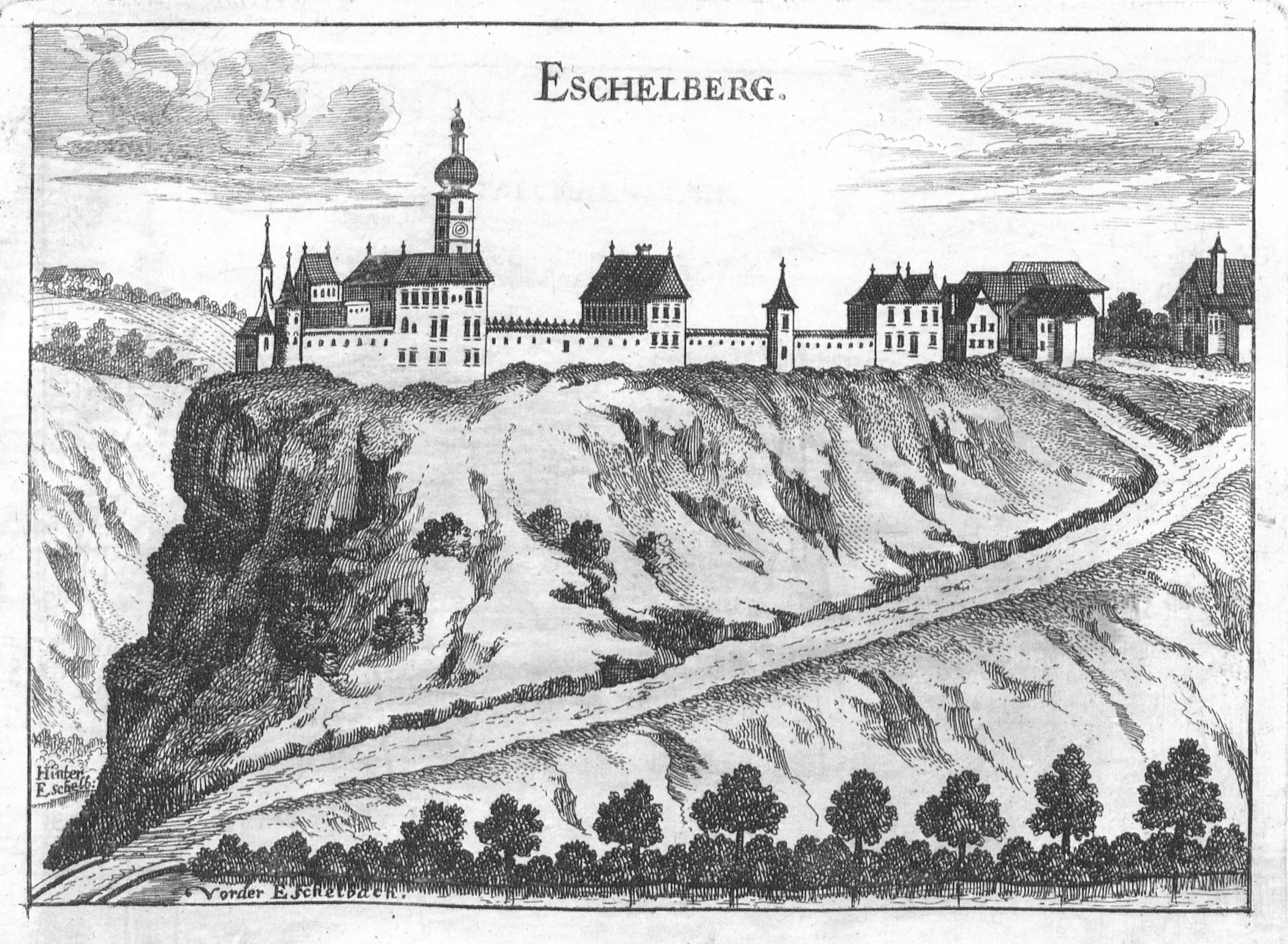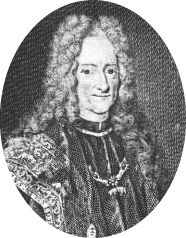|
Rottenegg Castle
Rottenegg Castle (german: Burgruine Rottenegg) is a ruined castle near the village of Rottenegg, Upper Austria, Rottenegg in the municipality of Sankt Gotthard im Mühlkreis, Austria. It dates to the 13th century, and was built to protect a medieval trade route. After 1712 the castle was allowed to decay, and much of it has disappeared. Location Rottenegg Castle is in Upper Austria about northwest of Linz. Is about to the north of Ottensheim, which lies on the Danube. The ruined castle is on a projecting rock promontory where the Kleinen Rodl enters the Großen Rodl river from the north, looking over the confluence. It guarded an old trade route that ran past this location. History Rottenegg is first mentioned in 1285. That year Chunrad and Sieghard Piber were cited as witnesses to a charter of the Wilhering monastery. They were named after Rottenegg, which presumably had already been standing for some time. The castle remained in the possession of the Piber family until 1340, ... [...More Info...] [...Related Items...] OR: [Wikipedia] [Google] [Baidu] |
Rottenegg, Upper Austria
Rottenegg is a village in the municipality of Sankt Gotthard im Mühlkreis, in Upper Austria. It is named after the now-ruined Rottenegg Castle, just east of the village. Rottenegg is surrounded by hilly country and is a good area for hiking, with excellent views. It once lay on a Via Regia, a medieval trade route. The ruined castle is on a projecting rock promontory where the Kleinen Rodl enters the Großen Rodl river from the north, looking over the confluence. It guarded the old trade route. The village puts on the Rottenegg Cultural Summer Program each year, which includes cabarets, concerts and plays. The village is home to the ''Mühlviertler Heimatverein Rottenegg'', a club that preserves folk dances and songs, and that puts on a play each year. The hall at the leisure center is also used for other events. References Citations Sources * * * * {{DEFAULTSORT:Rottenegg Cities and towns in Urfahr-Umgebung District ... [...More Info...] [...Related Items...] OR: [Wikipedia] [Google] [Baidu] |
Sankt Gotthard Im Mühlkreis
Sankt Gotthard im Mühlkreis is a municipality in the district of Urfahr-Umgebung in Upper Austria, Austria. Attractions include Schloss Eschelberg, a stately home built in 1596, and the ruined 13th century Rottenegg Castle. Villages The municipality contains the following villages: *Eschelberg *Grasbach *Haselwies *Maierleiten *Mühlholz *Oberstraß *Rottenegg, Upper Austria, Rottenegg Population Gallery File:Rottenegg Vischer 1674.jpg, Rottenegg Castle, now ruined File:Schloss Eschelberg-1.jpg, Schloss Eschelberg, built in 1596 File:Schloss Eschelberg-2.jpg, Schloss Eschelberg forest house File:St. Gotthard - Unterreithmühle 05.jpg, Medieval mill house File:St. Gotthard - Ehemaliges Gefängnis Eschelberg 01a.jpg, Former prison References Cities and towns in Urfahr-Umgebung District {{UpperAustria-geo-stub ... [...More Info...] [...Related Items...] OR: [Wikipedia] [Google] [Baidu] |
Upper Austria
Upper Austria (german: Oberösterreich ; bar, Obaöstareich) is one of the nine states or of Austria. Its capital is Linz. Upper Austria borders Germany and the Czech Republic, as well as the other Austrian states of Lower Austria, Styria, and Salzburg. With an area of and 1.49 million inhabitants, Upper Austria is the fourth-largest Austrian state by land area and the third-largest by population. History Origins For a long period of the Middle Ages, much of what would become Upper Austria constituted Traungau, a region of the Duchy of Bavaria. In the mid-13th century, it became known as the Principality above the Enns River ('), this name being first recorded in 1264. (At the time, the term "Upper Austria" also included Tyrol and various scattered Habsburg possessions in South Germany.) Early modern era In 1490, the area was given a measure of independence within the Holy Roman Empire, with the status of a principality. By 1550, there was a Protestant majority. In 1564, ... [...More Info...] [...Related Items...] OR: [Wikipedia] [Google] [Baidu] |
Linz
Linz ( , ; cs, Linec) is the capital of Upper Austria and third-largest city in Austria. In the north of the country, it is on the Danube south of the Czech border. In 2018, the population was 204,846. In 2009, it was a European Capital of Culture. Geography Linz is in the centre of Europe, lying on the Paris–Budapest west–east axis and the Malmö–Trieste north–south axis. The Danube is the main tourism and transport connection that runs through the city. Approximately 29.27% of the city's wide area is grassland. A further 17.95% are covered with forest. All the rest areas fall on water (6.39%), traffic areas and land. Districts Since January 2014 the city has been divided into 16 statistical districts: Before 2014 Linz was divided into nine districts and 36 statistical quarters. They were: #Ebelsberg #Innenstadt: Altstadtviertel, Rathausviertel, Kaplanhofviertel, Neustadtviertel, Volksgartenviertel, Römerberg-Margarethen #Kleinmünchen: Kleinmünchen, Neue ... [...More Info...] [...Related Items...] OR: [Wikipedia] [Google] [Baidu] |
Ottensheim
Ottensheim is a municipality in the district of Urfahr-Umgebung in the Austrian state of Upper Austria. In July 2008 it hosted the World Rowing Championships, and it did so again in 2019. History First settlements in this area date from about 4000 BC. The first mention of the settlement in a document dates from 1148 AD. In 1228 AD, Ottensheim received the market right – as third town in Upper Austria, after Linz (1210) and Enns (city), Enns (1212). In 1527, the Habsburg-Monarch Ferdinand I, Holy Roman Emperor, Ferdinand I endowed the town and the castle to his chancellor Niklas Rabenhaupt von Suche, who expanded the castle. The coat of arms of Ottensheim dates from this time. Ottensheim has existed as a municipality since 1848. At this time and until 1893 the now self-contended municipality Puchenau also belonged to Ottensheim. In 1871 the first ferry over the Danube was installed. It was destroyed by an ice jam eight years later, and rebuilt in 1882. In 1964 the now still wor ... [...More Info...] [...Related Items...] OR: [Wikipedia] [Google] [Baidu] |
Danube
The Danube ( ; ) is a river that was once a long-standing frontier of the Roman Empire and today connects 10 European countries, running through their territories or being a border. Originating in Germany, the Danube flows southeast for , passing through or bordering Austria, Slovakia, Hungary, Croatia, Serbia, Romania, Bulgaria, Moldova, and Ukraine before draining into the Black Sea. Its drainage basin extends into nine more countries. The largest cities on the river are Vienna, Budapest, Belgrade and Bratislava, all of which are the capitals of their respective countries; the Danube passes through four capital cities, more than any other river in the world. Five more capital cities lie in the Danube's basin: Bucharest, Sofia, Zagreb, Ljubljana and Sarajevo. The fourth-largest city in its basin is Munich, the capital of Bavaria, standing on the Isar River. The Danube is the second-longest river in Europe, after the Volga in Russia. It flows through much of Central and Sou ... [...More Info...] [...Related Items...] OR: [Wikipedia] [Google] [Baidu] |
Wilhering
Wilhering (Central Bavarian: ''Wilaring'') is a municipality in the district Linz-Land in the Austrian state of Upper Austria. Its slogan is "culture and life". There is the Wilhering Abbey, a Cistercian Abbey, and a Rococo church, and woods around. The Cisterican Abbey was established in the 1146 and was then rebuilt after it had been burnt down. It contains sketches and paintings by Austrian Baroque painters. The church has a Rococo interior which is one of the best examples of this style in Austria. Population Politics The mayor of the city is Mario Mühlböck of the SPÖ The Social Democratic Party of Austria (german: Sozialdemokratische Partei Österreichs , SPÖ), founded and known as the Social Democratic Workers' Party of Austria (german: link=no, Sozialdemokratische Arbeiterpartei Österreichs, SDAPÖ) unti ..., the leading party in Wilhering. Education and schools Wilhering has an education and child care facility. There are three elementary schools in Dörnbach ... [...More Info...] [...Related Items...] OR: [Wikipedia] [Google] [Baidu] |
Gundaker Thomas Starhemberg
Gundaker Thomas Starhemberg (Vienna, December 14, 1663 – Prague, July 8, 1745) was an Austrian economist and politician. Early life His parents were Konrad Balthasar von Starhemberg (1612–1687) and Countess Franziska Katharina Cavriani 91640-1716). His half-brothers were Ernst Rüdiger von Starhemberg (1638–1701), the defender of Vienna against the Turks in 1683 and Maximilian Lorenz von Starhemberg (1640–1689). Field Marshal Guido von Starhemberg was his cousin. Biography Gundakar was designated early for an ecclesiastical career, but after studying a while at the Collegium Germanicum et Hungaricum, he returned to Vienna and entered in the service of the Austrian Emperor. He was quickly noticed for his financial talents and became a protégé of Prince Eugene of Savoy, who urged for financial reforms to finance the many wars the Empire was waging. Gundakar became vice-president of the Court Chamber in 1698 and its president in 1703, and was president of the ... [...More Info...] [...Related Items...] OR: [Wikipedia] [Google] [Baidu] |
Eschelberg
 Eschelberg is a town in Upper Austria, Austria. It is part of the municipality of Sankt Gotthard im Mühlkreis. The town was first fortified in 1206 and the castle there was built around 1598.
Cities and towns in Urfahr-Umgebung District
{{UpperAustria-geo-stub ...
Eschelberg is a town in Upper Austria, Austria. It is part of the municipality of Sankt Gotthard im Mühlkreis. The town was first fortified in 1206 and the castle there was built around 1598.
Cities and towns in Urfahr-Umgebung District
{{UpperAustria-geo-stub ...
[...More Info...] [...Related Items...] OR: [Wikipedia] [Google] [Baidu] |

